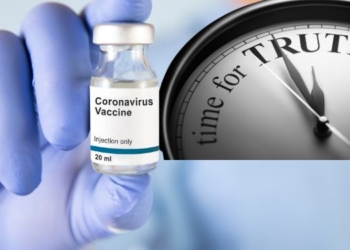Being able to use medical equipment in one's own home can help make treatments a breeze. Especially for those who suffer with high or low blood pressure. At-home blood pressure tests offer a simplistic way to get results without a trip to the doctor. Since it only takes a few moments, it can be difficult to justify taking the time to go to the doctor's office to monitor your blood pressure. At-home blood pressure tests can save you the trip, but can they offer you accurate results?
There is a multitude of at-home blood pressure tests that are available at most pharmacies. But, as with all at-home pharmaceutical supplies, you should use caution in deciding what test works best for your individual needs. Selecting a blood pressure test that isn’t suited for you can give you inaccurate results. This can lead to a delay in your receiving the help you need.

What Blood Pressure Test Should I Get?
What are some considerations you need to have in mind when selecting yours? The fit, the cost, and the technology are all things to consider when doing research to find the test that works for you. There are some other factors that can affect the accuracy of your test. The way you’re positioned or even your diet beforehand can affect the outcome of your test. So, even if your at-home blood pressure test is accurate, your activities and diet can affect your result.
Finding an at-home blood pressure test that has the right cuff size is crucial. Using a cuff that is too tight can cause your blood pressure to elevate. Using a cuff that is too small won’t give you accurate results. The 2017 High Blood Pressure Clinical Practice guidelines recommends the following cuffs sizes:
- Adult small cuff for a circumference of 22-26 cm
- Adult average for a circumference of 27-34 cm
- Adult large for a circumference of 35-44 cm.
Following these guidelines will ensure you get the most accurate reading possible.
What About Wrist Cuffs?
While some people may find a wrist cuff easier to administer, they can give inaccurate readings if they’re not placed right. If you’re over 50, wrist cuffs have an even harder time reading your blood pressure.
Finding a test that doesn’t need a stethoscope will also make the process easier and less confusing. The same is true for any advanced features. While having cool technological features can be helpful, they’re not necessary. As long as it can read accurately, all the other features are extra.
How to Take Your Blood Pressure Test
At-home blood pressure tests don’t read accurately because of position, previous activity, or by diet. These all can affect the readings and make your blood pressure seem higher or lower than it actually is.
Before you use your at-home blood pressure test, make sure you empty your bladder. Having a full bladder elevates your blood pressure, giving inaccurate results. You can use your own judgment on whether this is a necessary step beforehand.
The way you’re positioned can also affect your readings. Sitting with a slouch or with your legs dangling can cause high blood pressure. Sit in a chair with back support and with your feet flat on the floor. You can also sit on a stool to keep your blood pressure down.
Keep your legs straight as well, not crossed. Crossing your legs squeeze the large vein in your leg, raising your blood pressure. Make sure your arm is also relaxed and supported so that the cuff is level with your heart.
The clothes you wear can also be a factor in how accurate your readings are. Wearing a thick sweater or a couple of layers can cause your blood pressure reading to be off. So wear a thin layer or take the test under your shirt so that the cuff is as close to your arm as possible.
While taking your blood pressure at home, try to do it in a quiet place. Talking while taking the test or even having to listen to someone else talk can affect your results. Try to sit resting for 5 minutes before the test to get your heart at resting level.
Avoid smoking, alcohol, or caffeine before taking the test. All of these raise your blood pressure.
You should consider the temperature of the room and your emotional state while taking the test. If you feel too cold or anxious, this will affect your results. Since you’re in your own home and can change the temperature, keep it at a comfortable level when administering the test. Take it at a moment when you’re feeling calm and relaxed as well.
There are so many factors that can go into taking an at-home blood pressure test accurately. It’s recommended that you get one reading, wait a minute and try again, then wait a minute and do it a third time. Then you can average out the readings and log the result. This will help with accuracy. Take your blood pressure test to your doctor's office once a year to ensure that the test is still reading accurately or to see if you need a new one.
Buying a test that works for you shouldn’t be a complicated process. If you have any questions or concerns, it’s always better to address them to your doctor. But otherwise, find a test that fits your arm size and is automatic and you should be set. When you go to your doctor’s appointments, compare your results to their readings and see if they’re close to your average. From there you should be able to recognize if your at-home test is reading correctly or if you need to find a new one. Be sure to follow the guidelines on proper use and that your settings at home are ok for tests. So whether an at-home blood pressure test is accurate heavily depends on you.
Resources – Harvard Health Publishing, Cleveland Clinic














